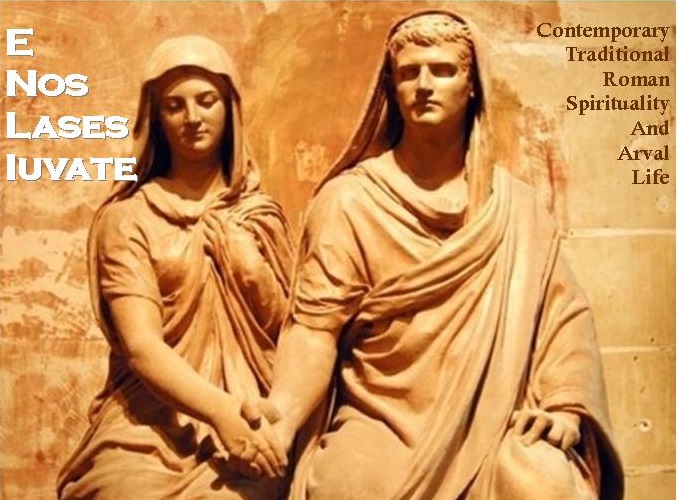L'antico nome di questo mese è Quintilis poichè
era il quinto mese dell'antico calendario di Numa che iniziava a
Marzo. In seguito venne chiamato Julius in onore di Giulio Cesare.
Il mese è dedicato ad Apollo (polarità
maschile): si tratta quindi di un periodo dedicato alla trascendenza,
alla saggezza, alla medicina, alla musica e alla poesia.
Apollo
viene associato al Sole: viene anche definito come "colui che esiste
senza dipendere dagli eventi del Mondo", "colui che sta in disparte",
"l'astratto" o "il sempre lontano".
Gli animali sacri ad Apollo sono: il cigno, il lupo, il cervo e soprattutto il delfino.
Le piante e gli alberi sacri ad Apollo sono: il cipresso, il giacinto e l'alloro.
Ad Apollo (e a Diana sua polarità femminile) erano dedicati i Ludi Saeculares che si tenevano a Roma ogni cento anni.
------------
Poichè il calendario sacro agisce come una sorta di bussola per
orientarci fra le forze e le energie divine, possiamo dire che questo
periodo dell'anno è fortemente permeato dall'energia di Apollo,
una Divinità estremamente complessa. Pertanto ritengo possa essere utile
approfondirne, sia pur brevemente, le caratteristiche per comprenderne
il significato ed il ruolo. Ovviamente quello che segue deve essere
inteso in senso non-profano.
 |
| Notare la simbologia estremamente complessa che accompagna questa reaffigurazione di Apollo di epoca Etrusca |
|
Apollo è "associato" al Sole (Helios), da intendersi non come ente astronomico, come emanazione di questa Grande Divinità.
"Apollo dimora con Helios e ne condivide la semplicità dei pensieri,
l'immutabilità della sostanza e l'uniformità dell'attività" (Giuliano
Imperatore, A Helios Re, 22)
Apollo è in particolare il pulsare dei raggi del Sole. Esso è "Luce": viene definito "lucente", "splendente", "chiaro", "brillante" ed è simboleggiato dalla lira per rappresentare l'armonia celeste. Esso reca le frecce che simboleggiano appunto la forza dei Raggi del Sole che hanno un potere creativo o distruttivo.
Lo stesso nome di Apollo viene definito come "ben accordato ed
armonizzato", da qui l'associazione con la musica. Ma la musica di cui
si parla non è quella profana, ma quella "universale" e "cosmica"
risultante dall'armonia dell'Universo stesso. Apollo infatti porta
l'ordine e la misura nell'Universo eliminando ogni dissonanza. Egli
quindi si pone al centro come un "direttore d'orchestra" coordinando la
musica del cosmo ed agendo come un equilibratore. Secondo l'ordine dei
Caldei Apollo si trova infatti nel punto di equilibrio delle nove sfere:
le nove sfere "danzano in armonia intorno al Sole". L'harmonia mundi risulta quindi dall'insieme del suono e canto di tutte le sfere (universitas sonorum) all'interno di tutta la struttura cosmica dell'Universo.
Apollo è circondato dalle Nove Muse "che cantano per Lui", dai
sette pianeti e dalla "sfera fissa". Le Muse sono l'espressione divina
dell'attività del pensiero: esse sono "il canto dell'Universo". Apollo e
le Muse sono quindi quelle forze che "dirigono" l'Universo (Apollo Musagete
- che dirige le Muse). Apollo è l'elemento unificante delle Muse,
Signore dell'Armonia Totale, forza che lega elementi differenti che sono
alla base di questa Armonia Cosmica.
Il suo potere principale è quello "grazie al quale fa apparire l'intera
sostanza intellettuale come un tutto unico, perchè congiunge i suoi
estremi in un'unica ed identica realtà" (Giuliano Imperatore, A Helios Re, 22).
I suoi raggi hanno un andamento "danzante" e con i suoi raggi le Vestali accendevano e custodivano il Fuoco Sacro di Vesta.
Come già detto, la sua pianta simbolica è l'alloro perchè considerata "pianta piena di fuoco"
capace di allontanare i daemoni negativi. Inoltre la tradizione indica
che l'alloro è una "pianta loquace quando brucia" e ciò viene associato
al potere profetico connesso ad Apollo. La Pizia a Delfi ne impugnava un
ramo, ne masticava le foglie e ne inalava i fumi dalle foglie bruciate.
L'alloro che crepita manifesta il potere oracolare di Apollo che può
dare oracoli dove cresce questa pianta.
L'alloro è inoltre una pianta importantissima nelle pratiche teurgiche, purificatrici e curative.
Apollo ha inoltre il potere di allontanare i mali dagli uomini e
dalle donne: Asclepio è il suo simbolo come forza della medicina. In
questo caso esso presenta un bastone come sostegno ai malati intorno al
quale si avvinghia un serpente come simbolo della salvezza del corpo e
dell'anima. Essendo legato ai raggi del Sole, Apollo libera dalle
malattie, purifica il corpo e restituisce armonia al corpo. La malattia
infatti è sintomo di disordine, disgregazione, disarmonia. Il calore dei
raggi del Sole riporta invece l'equilibrio. Apollo quindi è forza
curativa e salvifica non solo del corpo ma anche dell'Anima poichè veicola i Raggi del Sole Interiore.
Poichè ciascuno di noi contiene in sè quella materia che deriva
dall'energia del Sole, del Cosmo e delle altre stelle, nella parte
razionale di una persona risplende un raggio per opera del Sole-Apollo.
La comprensione del "messaggio di Apollo" implica di avere parte della
Conoscenza e di divenire Uomini e Donne Solari ovvero Perfetti. Gli
altri sono uomini e donne puramente e solamente razionali, ma che
tuttavia "ignorano".
Quelle che ho qui riportato sono considerazioni "minime", superficiali e
brevi. Tuttavia, sulla base di ciò, possiamo ancora definire tutto
questo pertinenza di una religione nell'accezione "moderna" e devozionale del termine?
Non ci troviamo forse di fronte a qualcosa di più complesso, di più
profondo?











